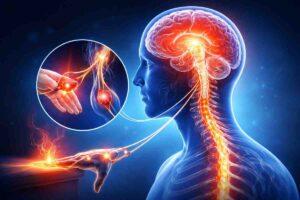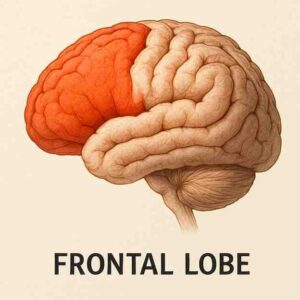When you are on the other side, you realise the value of hospital “rounds” and why Sir needed to ask you those million questions
Rounding is an activity that involves seeing all patients admitted under a doctor at a hospital, charting out their plan for the day as well as communicating with relatives. Various disciplines come together to coordinate care, helping colleagues to share and discuss ideas. It is also an invaluable education for resident doctors to learn how decisions are made.
The genesis of the term is credited to legendary physician Sir William Osler, one of the founders of the highly regarded Johns Hopkins Hospital in the United States. The original building had an octagonal ward where a team of physicians would tour patients’ bedsides, calling it “rounds”. On days when Dr Osler—known for his encyclopaedic knowledge and tough questioning of residents—arrived, the sessions were dubbed “grand rounds”.
As residents in training in a high-volume neurosurgery department, “rounds” comprised an activity we dreaded. Each resident was in charge of a ward that housed between 12 and 15 patients. It was his duty to work-up patients for surgery and then manage their post-operative care until they were discharged. This included writing a detailed history and performing an examination, sending off and following up on investigations and scans, doing minor bedside procedures and meticulously documenting daily progress, and preparing detailed discharge summaries with monastic ferocity. While two or three patients would get discharged daily, an equal number would be admitted too, keeping the total constant. This work was interspersed with attending surgeries in the operating room and handling emergencies in the casualty or elective cases in the outpatient clinic. As soon as the day began, it was already over.
Rounds started at 8 am sharp with resolute religiosity. We plodded through the night to prepare for them, and, if we’d slept at all, woke up by 5 am to shave and bathe and check on every one of our patients before we could present the latest update to the head of the unit. For new admissions, neurological findings had to be demonstrated and a clinical diagnosis offered, a process that involved rigorous questioning and railing by the head and an embarrassingly public demonstration of how little we knew, whether it was our first day of training or the last.
It was anyone’s guess as to who would be at the receiving end of the boss’s rebukes each morning. One of the resident doctors was permanently nicknamed “Kellogg’s”, as he was routinely part of “Sir’s breakfast”. Sir was a stern man, terse in his communication and a thorough disciplinarian. Not one to brook mediocrity, he had a proclivity for perfection. We would be imbued with fear when he walked into the ward, easily forgetting everything we had spent the entire night preparing for. He walked with his hands behind his back and spoke very little, acknowledging you mostly with a downward forward bending of the head, occasionally combined with a prophetic raising of the arm.![]()
He needed to ask just one pertinent question to know whether we had thoroughly examined the patient or were simply confabulating, something that comes naturally to residents. He used to nod even when we answered incorrectly, making us believe that we were right, not knowing that the amplitude of the nod was directly proportionate to the ludicrousness of the answer. And so we continued to say more and more of what was wrong, digging a deep, dark hole for ourselves, our colleagues squirming in the background hoping that we would just, please, stop talking. He would finally convey to us what he thought of our answer by drawing a large recursive circle in the air with his index finger. Only after the first few times did I realise that I was a gargantuan zero.
On other occasions, when the blunder was more serious on our part, the sign language was less indirect: The index finger pointed to the exit corridor of the ward and you were jettisoned. One could not argue the verdict. While in a sense this came as a relief to the exiting doctor, because he could go and grab some much-needed breakfast, the pressure really was on the next in line who had to take over and “present” a ward he was not in charge of. The bottom line was that every resident needed to know about all 45 patients in the unit because you never knew whose exit was scheduled and when.
After about 90 minutes of rounds, our heart rates normalised with hot chai. We grumbled about why he needed to stress on every triviality. Why did we need so many checklists and protocols? Why was there a need for multiple levels of crosschecks? Why were we asked so many questions and spend the rest of the day finding answers, when there was barely enough time to brush or bathe?
As is the case with every true disciple, the rigor ingrained by the master revealed itself only years later: when I was on the other side of the fence, degree in hand, now solely responsible for my patient’s outcome. I became obsessive about every lab value, the nitty-gritty of every symptom, getting down to the brass tacks of all the possibilities we could be dealing with, and tightening all the nuts and bolts before the patient was wheeled into surgery. One inadvertent glitch can often make the difference between life and death.
I once walked into the operating room to find that an incision had been marked with a marking pen on the right side of the head for a patient who had a left-sided brain tumour. Someone had flipped the scan on the viewing box by mistake, probably in a hurry to get the case started once it was in the OR. If it weren’t for this zealous devotion to detail, counterchecking all that had already been confirmed each and every time and several times a day, we would have opened the wrong side of the head that day.
Every day, we come across several instances in practice where we recall what our teachers and mentors taught us. Every tough lesson learnt on our rounds, unbeknownst to us then, becomes poignant and relevant today. We don’t feel a sense of personal prejudice anymore, simply the hunger for excellence, and a common desire to universally elevate standards in the care of our patients. Not a day goes by without us acknowledging the value of our teachers in our professional betterment, recognising it in our heads but mostly in our hearts.



